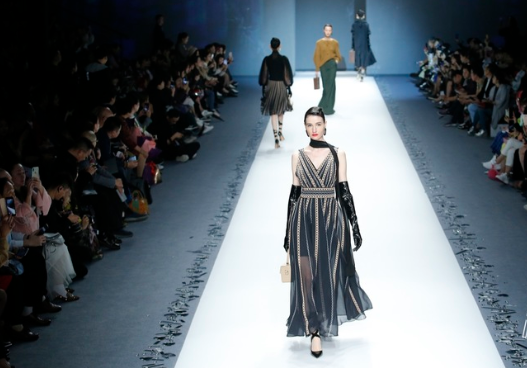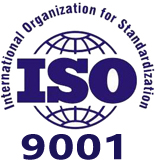Fanning fashion's cultural flame
On the first day of November, Chinese womenswear fashion brand Yaying launched its 2020 haute couture collection in Beijing.

Set against the backdrop of the city center, on the rooftop of the Mandarin Oriental Hotel in the capital's Wangfujing area and overlooking the Forbidden City exactly one month after National Day celebrations, the show was a testament to the grandeur of the brand's vision and the global relevance of its exquisite Chinese culturally-inspired fashion.
This season, Chen Xi, the creative director of the brand, draws inspiration from the Forbidden City as not just a tribute to the finest Chinese aesthetics and craftsmanship, but also as a celebration of the Forbidden City's 600th anniversary next year, with a focus on the private collection of Chinese fans housed within the palace's museum.
With the theme of "Chinese Fans (Hua Shan)", the show and the collection seeks to renew tradition and reshape it for the present.
Fans are the epitome of Chinese culture with a long heritage, and are an excellent witness of time with many symbolic meanings in Chinese culture and tradition, especially among the former royal family as well as within art and culture-as seen in Xu Yang's classical painting Emperor Qianlong's Southern Inspection Tour.
From his research on the subject, Chen provides examples of particular fans that stood out among the paintings of both Emperors Kangxi and Qianlong, such as the big round ceremonial fan used for shade when they departed Beijing (once referred to as Jingshi); the folding fan that was popular among scholars of the time; and the small round fan the courtesans carried while on excursions to Yanyulou (a landmark building in Jiaxing, Zhejiang province, that Qianlong visited eight times).
"These fans are beautiful, elegant and graceful, and we extracted elements from their outline or pattern and arranged them into a new form to produce a modern visual effect," Chen says.
The selection of the fans was not just a whim, either, according to Chen, who notes that he always wanted to design a collection inspired by the shapes, colors and designs of the artifacts, particularly citing their exquisite craftsmanship and a sense of duty to preserve that.
"We have a responsibility to preserve and develop these skills and traditions," he says, adding: "Yaying has always humbly dedicated ourselves to making good clothes, and we aim to continue passing on and renewing the concept and craftsmanship of Eastern royal aesthetics to our consumers."
In contrast to the impression of traditional Chinese aesthetics in the past, the brand employs light and bright colors as its main tone.
Drawing from the color palette of the Forbidden City, Chinese jade is complemented by the relaxing color of living coral, indigo blue and futuristic silver, a reference to the concept of time and to balancing modernity and Eastern aesthetics to tell a beautiful story of timeless Chinese elegance.
Oriental aesthetics
These oriental aesthetics have long been a subject and the highlight of the designs for many local brands.
Ne Tiger, as the fashion brand that has opened China Fashion Week for 19 consecutive years, brought its collection based on the travels to the west of Ming Dynasty (1368-1644) explorer, Zheng He. The collection displays the exotic charm and culture of countries along the ancient Silk Road, as well as offering modified Chinese traditional costumes, such as qipao dresses made with breezy fabric more suited to the hot weather in regions of Southeast Asia.
Meanwhile, Guyan, a brand from Shenzhen, Guangdong province, draws inspiration from plum blossoms, orchid, bamboo and chrysanthemum-four kinds of flowers that are widely used to eulogize noble virtues in China since ancient times. They are embroidered on modern-styled Tang suits and qipao while, once again, fans also play a role.
It brings us neatly back to Yaying's latest collection, which portrays Chinese aesthetics and traditional elements in a more abstract form, with motifs taken from Chinese fans appearing throughout the collection.
The geometric tailoring and structures allude to the ceremonial fan used by the royal family that symbolizes their majesty. Dragon, river and cliff patterns add a cultural and poetic elegance, as well representing the independent and self-confident feminine spirit today.
The three-dimensional structure of the folding fan is recreated using a number of precise, hand-pleating techniques, underlining a women's strength underneath her gentle temperament.
The circular court fan is a symbol of refinement and is piece of exquisite art in itself, and is adapted to include iconic Chinese elements such as the ruyi cloud, which symbolizes blessings and harmony, and peony flowers that exude energy and elegance.
Exquisite Craftsmanship
With its suits, the brand is looking to accentuate a woman's strength with simple, yet strong, silhouettes, especially that of its three-dimensional curved shoulder blade design-masterfully made-to-measure and adorned with beaded patterns, once again alluding to ruyi clouds, rivers and cliffs. Each pattern is the product of 351 hours of hand-sewn craftsmanship.
Inspired by a Yuan Dynasty (1271-1368) blue glazed plum vase with a white dragon pattern, the brand's artisans spent over 104 hours recreating the pattern with embroidery entirely by hand, emblazoned with iridescent sequins of 15 different colors and sizes. There is even a stunning black gown covered with 1,032 small, hand-pleated fans that required 205 hours of skill and precision to create.
Just a month after the celebration of the 70th anniversary of the founding of the People's Republic of China, Chinese fashion continues to be buoyed by the increasing popularity and attention given to Chinese culture.
And as Zhang Huaming, chairman of EP Yaying Fashion Group, will attest, culture is the soul of a country and its people. It is also something the brand has remained committed to protecting in its role as both inheritor and innovator.
Founded in Jiaxing city, Zhejiang province, in 1988, Yaying's fortunes have been almost directly tied to the country's reform and opening-up policy of the past 40 years. The fashion group has grown from a small garment factory into a modern business with more than 5,000 employees and an enviable portfolio of luxury fashion brands and retailers, including EP Yaying, Doublelove, N. Paia, Da Ya Jia, GraceLand, and Little Space.
Rooted in arts and culture
To keep pace with the market, in 2016, the group reinvented its main brand EP Yaying, launching a dual-brand development strategy, "The World's EP, China's Yaying".
EP, which focuses on producing ready-to-wear clothing, offers contemporary fashion styles that harmoniously integrate Oriental and Western aesthetics and artistic elements, reflecting both global fashion and contemporary Chinese lifestyle.
Yaying, meanwhile, is the company's haute couture line, tracing its Chinese roots and focusing on the deep exploration of China's traditional culture, aesthetics, fashion and craftsmanship-integrating contemporary aesthetic tastes into its designs for the modern women, but with a clear, exquisite Chinese cultural identity.
Yaying's 2017 Spring/Summer collection saw the debut of its imperial robe-themed series, which met with rave reviews, firmly establishing its "Eastern royal aesthetics" credentials. The brand continues to draw inspiration from Chinese culture, not only for creative inspiration but also in the hope that it can help connect the past with modern fashion, injecting new energy into the industry and enabling a new generation of fashion-conscious women to rediscover that culture.
"In the age when fashion designer is no longer an unusual occupation, Chinese fashion seems to be a concept that is getting confusing and contradictory. However, if I have to define Chinese fashion, Yaying is one of the first brands that jumps into my mind," says Xu Fengli, a Chinese fashion blogger.
To celebrate the company's 30th anniversary last year, EP Yaying premiered its dual-brand 2019 Spring/Summer collection at the closing ceremony of the China International Fashion Week Spring/Summer 2019. Themed "Convergence & Creation", the two collections displayed the balance between mankind and nature, art and culture, tradition and the contemporary. Both the show and collection received unanimous acclaim from the media and the public alike.
In order to preserve and develop traditional handicrafts, the group set up a workshop in 2012 that gathers many professionals who have been practicing traditional craftsmanship for decades, such as embroidery, beading, weaving and hand painting. It also grooms their successors; young and new talent to inherit and innovate these traditional crafts.
"What makes excellent Chinese haute couture? Only those who know how to both inherit and innovate can witness and create the future," Xu concludes.
It is an area in which another homegrown fashion brand is looking to excel. Like the other Chinese fashion houses mentioned, Jefen-established by Xie Feng-used the recent China Fashion week to present a clothing line that introduced elements of traditional culture in a modern context. In this case, rather than motifs and symbolism, the brand took a rather more practical approach, combining fabrics and materials, such as silk gauze and linen, with western-styled tailoring.
The future direction
Today, EP Yaying is represented in more than 210 cities with over 500 stores across China and Malaysia, including Beijing, Shanghai, Guangzhou, Shenzhen, Macao and Kuala Lumpur.
In 2020, the brand will enter the American and Australian markets, and continue to share its contemporary, elegant fashion aesthetic with the world.
Looking forward to the next 30 years, Zhang notes: "We will continue to cultivate a higher degree of cultural self-confidence, rooted in Eastern culture with a global perspective.
"The Chinese believe in harmony and the world is home to all. We will continue to create more value for our customers and contribute to the great rejuvenation of Chinese culture in the global fashion industry."

